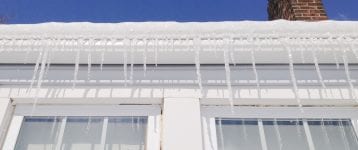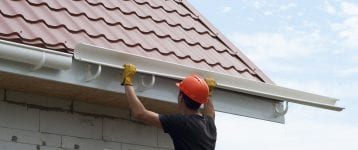Seepage pits can be an effective way to manage runoff wastewater, and they are often built into the design of older properties.
In this article, we are taking a look at the most common questions people have about seepage pits: what they are, how they work, and whether it’s a good idea to use a seepage pit on your property.
What is a Seepage Pit?
A seepage pit is designed with a chamber underground that can hold liquids. Seepage pits work with septic systems because the liquid wastes move into the pit. The walls of a seepage pit allow for wastewater to gradually seep out, where the water moves into the surrounding soil
Different materials and designs can be used for seepage pits and sewage disposal. The most common materials include cinder blocks, concrete, or precast concrete rings that are designed with no bottom.
What is a Seepage Pit Used For?
The primary role of a seepage pit is to handle partially treated wastewater coming from the septic tanks. It’s important for homeowners to understand that the septic tank and seepage pit are two separate parts of the sewer system.
The septic tank is part of the onsite wastewater treatment system. It stores the waste and partially treats the contents. Then, the wastewater is dispersed through the seepage pit. Since seepage pits have such a simple design, they are not suitable alone for handling raw sewage.
Are Seepage Pits Legal in New Jersey?
Rules are set by the permitting authority in New Jersey regarding sewage systems, septic tanks, and more. The current regulations state that seepage pits are legal in existing systems. So, if a home was built years ago with a seepage pit, then it is legal to keep this system.
However, for new construction or renovations on existing properties, seepage pits are no longer permitted in the state of New Jersey. Since there are many environmental concerns with this system, the state authorities have decided to use other sewage systems.
The main concern of seepage pits is the way the system can contaminate both the groundwater and soil. If pollution moves into the groundwater and surrounding soil, then it can cause problems in the ecosystem, resulting in expensive cleanup work to restore the area.
If you have an existing seepage pit, then it must be properly maintained. In cases where the seepage pit fails or major repairs or replacements are necessary, then the seepage pit may need to be replaced with a modern system.
How Long Does a Seepage Pit Last?
One of the most frequently asked questions we hear is: how long will my seepage pit last? Multiple factors affect how long a seepage system will last:
- Construction Quality: Well-built seepage systems can last for many years. But if there are issues with the construction quality, then there’s a higher likelihood of the system failing prematurely. The most durable seepage pits are constructed with concrete or cinder blocks. Other materials, such as fieldstone or brick, are more prone to deterioration.
- Soil Type: Sandy soils are the ideal solution for seepage pits because they allow the wastewater to drain efficiently. Proper drainage extends the lifespan of the pit and also reduces the risk of backup problems. If you have clay content in the soil, then the ground is less permeable – which hinders drainage and increases the likelihood that the system will fail prematurely. In areas with clay soil, it’s more common to use alternative systems such as a leach field.
- Maintenance: If you want to maximize the lifespan of a seepage pit, then it’s essential to stay consistent with regular maintenance. The septic tank needs to be pumped to prevent the buildup of solids, which in turn reduces the burden on the pit. Also, mark your calendar for routine inspections to check for issues such as tree root infiltration, leaks, or cracks.
- Usage: One significant influence on the lifespan of a seepage pit is the way it is used. These patterns vary depending on the size of the household and the amount of wastewater that is being generated. For example, a large household with high water usage puts more strain on the pit, which can decrease the lifespan. Improper usage also causes issues, such as disposing of harsh chemicals, grease, or non-biodegradable items – because these things disrupt the delicate balance of bacteria in the septic system.
As a general rule of thumb, seepage pits usually last between 20–30 years. But, depending on the above conditions, this timeline can be shorter or longer.
Please note: If you have a seepage system, then it’s important to watch for these signs of failure:
- Slow draining fixtures
- Sewage backups
- Foul odors
- Soggy ground around the pit
How Much Does It Cost to Replace a Seepage Pit?
The replacement costs for a seepage pit vary, depending on the size of the pit, the location, the estimated labor required, and the soil conditions. Typically, if you are replacing a seepage pit, then it means that you are putting in a modern sewer system – not a new seepage pit.
If a new septic system needs to be installed to handle solid waste, scum, and sludge, then it’s best to receive a quote from a professional like Mikula Contracting who can provide you with the proper solution and pricing for your drainage and seepage pit needs.
Have Additional Questions About Seepage Pits? Mikula Can Help!
The reality is that seepage pits can be useful, but there are sometimes environmental concerns. The good news is that modern solutions can be used to make them more effective. If you have a seepage pit and need a professional opinion, then reach out to our experienced team for help. At Mikula, we have experience with seepage pits and many other related services.



